In the vibrant tapestry of the avian world, hummingbirds stand out as living jewels, mesmerizing observers with their iridescent plumage and remarkable hovering abilities. While most hummingbird species are strictly diurnal, conducting their high-energy lives exclusively during daylight hours, there exists one remarkable exception that has evolved to embrace the darkness. The Hermit Hummingbird (Phaethornis longirostris), commonly known as the Long-billed Hermit, holds the distinction of being the only truly nocturnal hummingbird species on our planet. This extraordinary adaptation represents one of nature’s most fascinating evolutionary divergences, allowing this species to occupy a unique ecological niche while its relatives sleep.
The Evolutionary Marvel of Nocturnal Adaptation
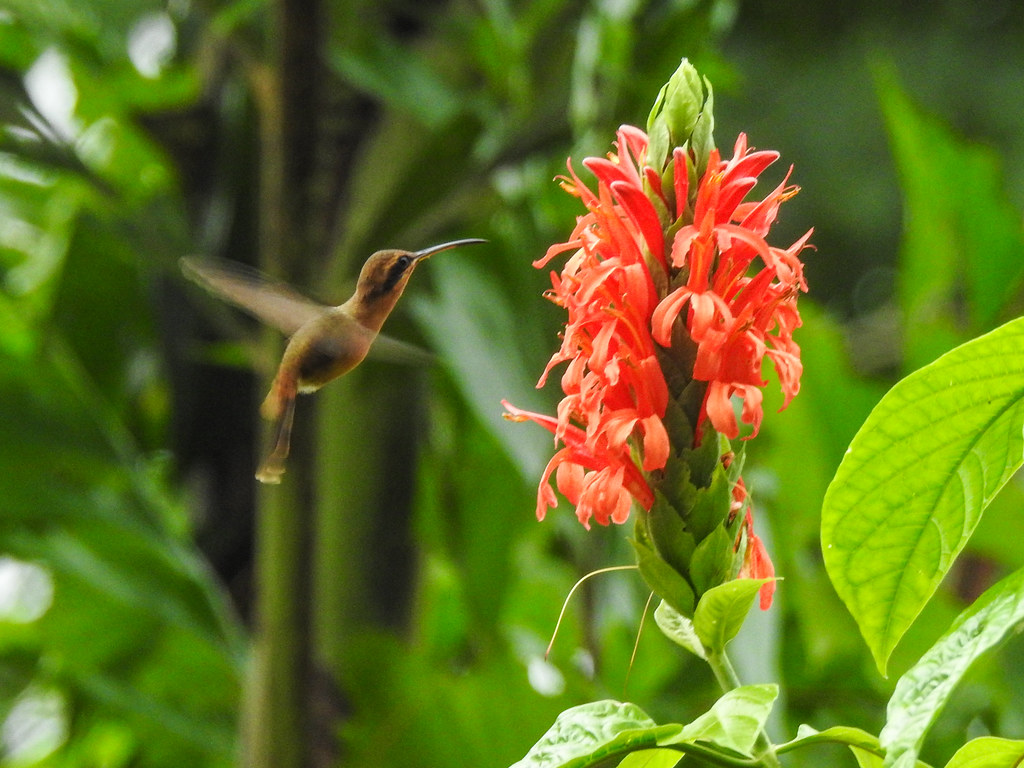
The Long-billed Hermit’s nocturnal tendencies represent an extraordinary evolutionary adaptation that sets it apart from all other hummingbird species. Scientists believe this adaptation developed as a response to competitive pressure from other nectar-seeking birds and insects that dominate daylight feeding opportunities. By shifting its active period to nighttime, the Long-billed Hermit gained exclusive access to nocturnal flowering plants that evolved to be pollinated during evening hours. This relationship exemplifies coevolution, where both the bird and its preferred plants have developed complementary traits over thousands of years. The mutual dependency created through this evolutionary dance has allowed both parties to thrive in ecological spaces unavailable to their daytime counterparts.
Physical Adaptations for Night Living
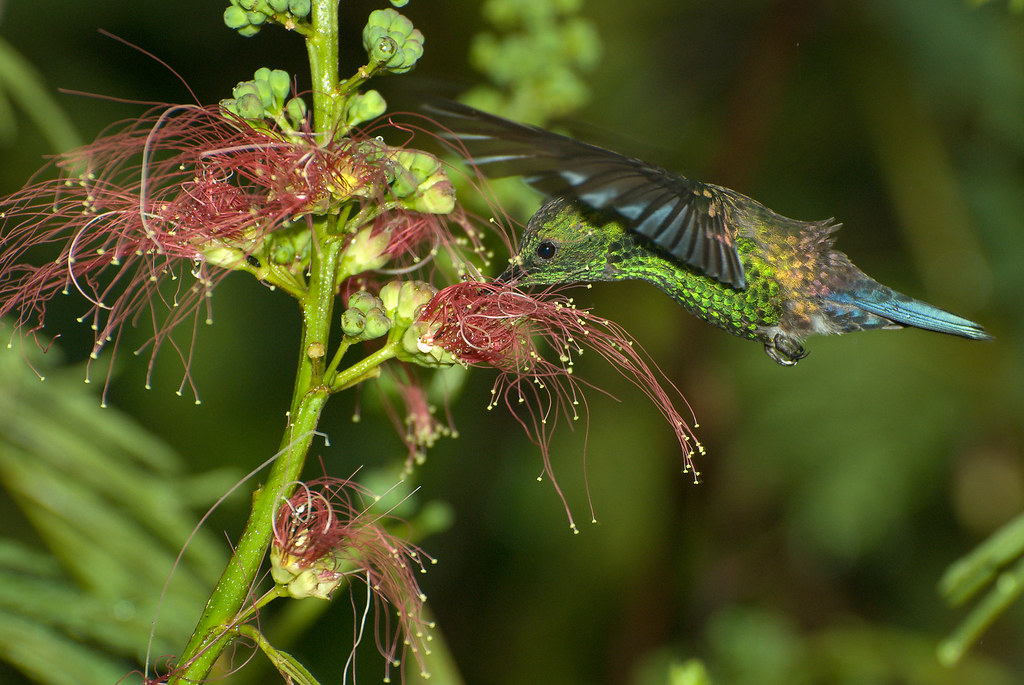
The Long-billed Hermit possesses several specialized physical adaptations that enable its nocturnal lifestyle. Most notably, its eyes contain a higher concentration of rod cells compared to other hummingbird species, enhancing its ability to detect movement and navigate in low-light conditions. The distinctive elongated bill, measuring up to 4 centimeters, allows it to access deep tubular flowers that bloom at night, many of which are inaccessible to other pollinators. Its wings have evolved a unique structure that produces minimal sound during flight, making the bird nearly silent as it moves through the darkness—a stark contrast to the distinctive humming that gives the family its name. Additionally, the Long-billed Hermit’s plumage features subdued earthy tones of brown and gray, providing effective camouflage during both its active nighttime hours and daytime rest periods.
Habitat and Geographic Distribution
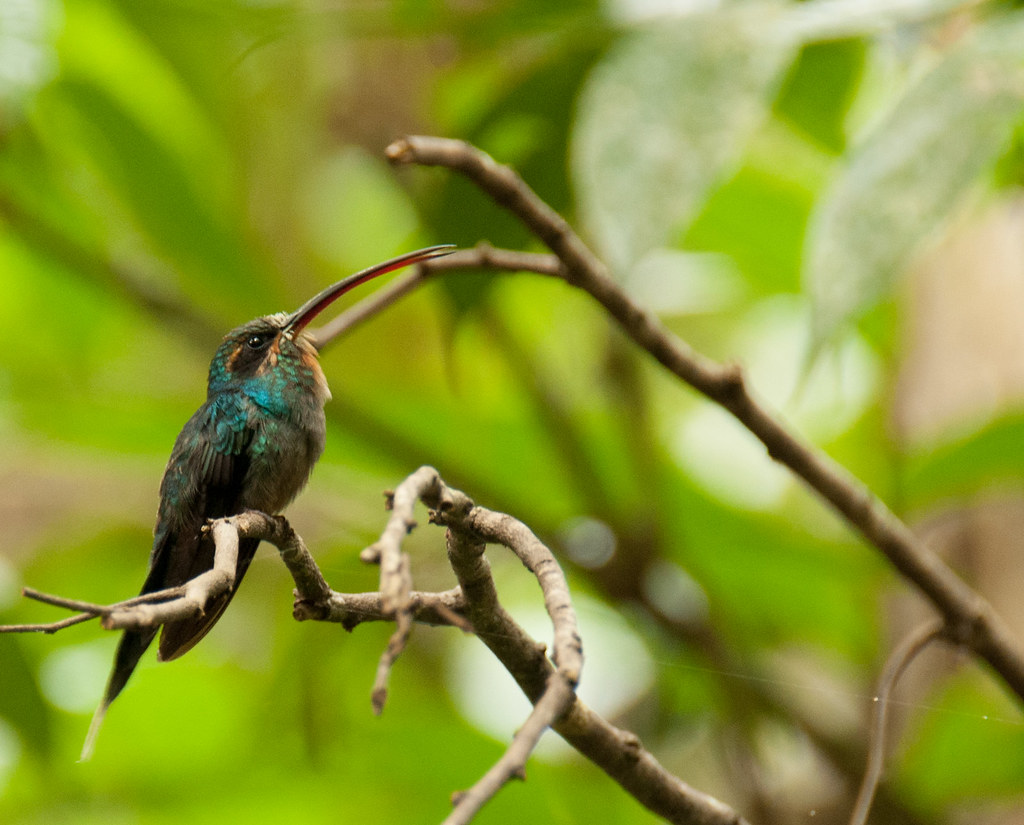
The Long-billed Hermit makes its home primarily in the tropical and subtropical regions of Central America, ranging from southern Mexico through Panama and into northern South America, including parts of Colombia and Ecuador. These hummingbirds show a strong preference for the understory of humid lowland forests, particularly favoring areas with dense vegetation that provides both protection and abundant food sources. Unlike many hummingbird species that adapt well to human-altered environments, the Long-billed Hermit typically requires intact forest ecosystems to thrive. Research has shown that these birds are especially dependent on forest corridors that connect larger habitat patches, allowing them to move between feeding and breeding territories. Their specific habitat requirements make them particularly vulnerable to the effects of deforestation and habitat fragmentation throughout their range.
Specialized Feeding Behavior
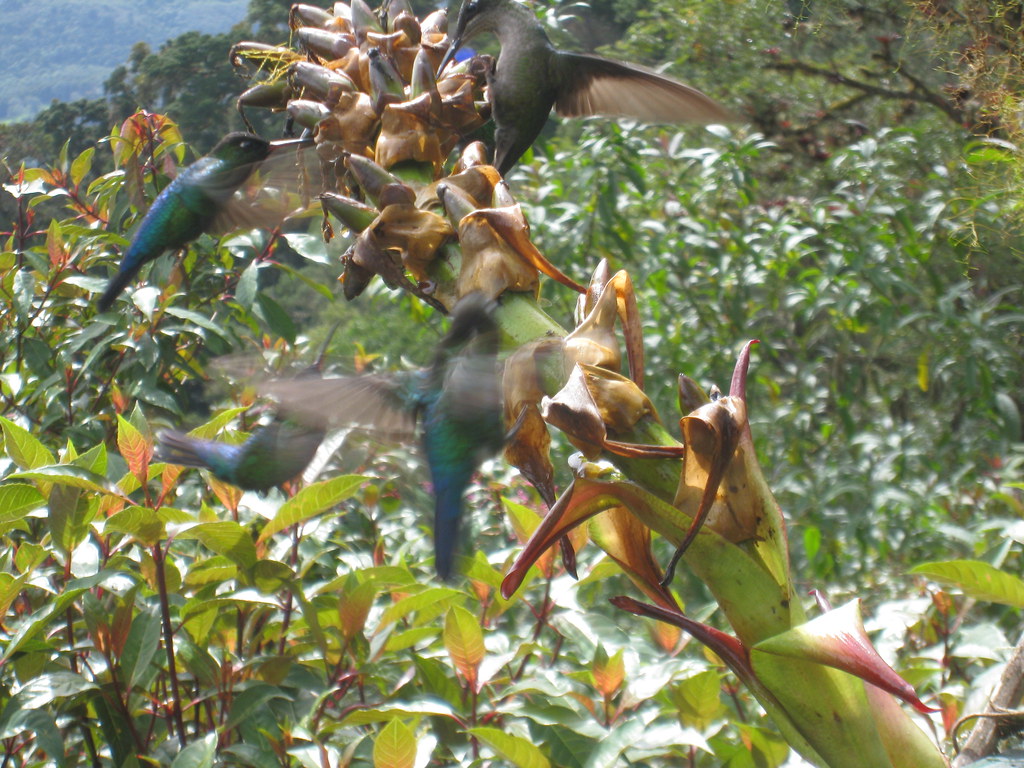
The feeding strategy of the Long-billed Hermit revolves around a highly specialized relationship with night-blooming flowers that produce copious amounts of nectar during evening hours. These flowers typically display pale coloration that remains visible in low light and emit strong fragrances that help guide the hummingbird to its food source. The bird has developed remarkable spatial memory, allowing it to establish and follow specific “traplines”—regular routes between flowering plants that it visits in sequence night after night. Each individual may maintain a feeding circuit of 100-200 flowers that it monitors consistently, returning to each plant at approximately the same time every evening. This methodical approach to foraging ensures the bird maximizes nectar intake while minimizing energy expenditure, a critical balance for maintaining the extraordinarily high metabolism characteristic of all hummingbirds.
The Challenge of Hovering in Darkness
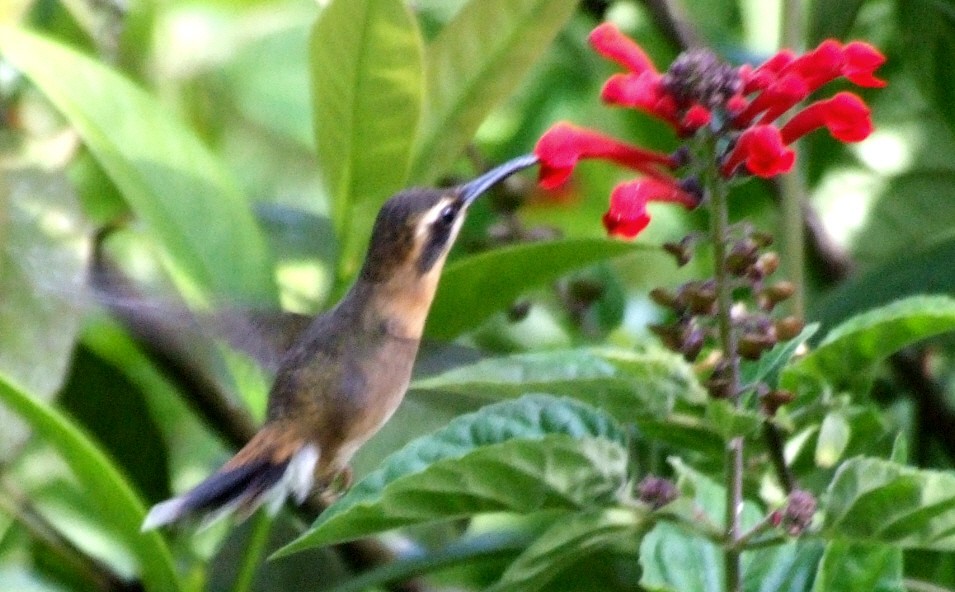
Hovering represents one of the most energy-intensive forms of animal locomotion, requiring precise visual feedback to maintain position—a particular challenge in low-light conditions. The Long-billed Hermit has developed enhanced proprioception, the sense of body position and movement, allowing it to maintain stable hovering flight even when visual cues are minimal. Its wing structure has evolved to provide maximum efficiency during slow, controlled flight, with specialized muscle fibers that resist fatigue during extended hovering periods. Infrared thermal imaging studies have revealed that these birds maintain body temperatures approximately 10°C higher than other nocturnal birds, supporting the intense metabolic demands of nighttime hovering. Additionally, the species demonstrates remarkable vestibular sensitivity, utilizing specialized balance organs in the inner ear to maintain spatial orientation when visual references are limited in the darkness of the forest understory.
Social Structure and Communication
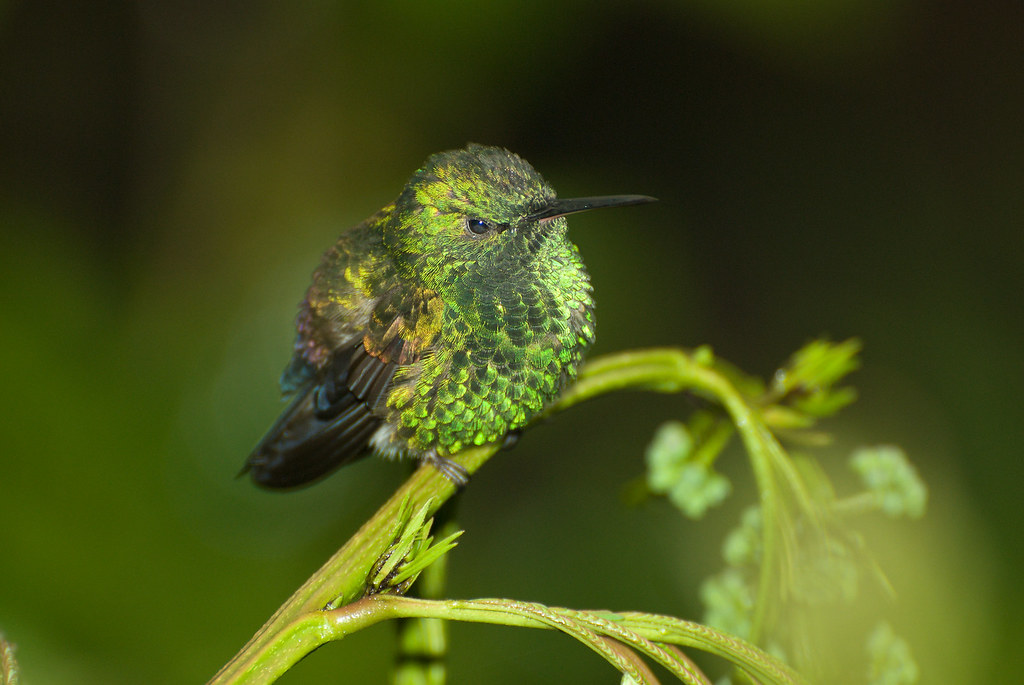
The Long-billed Hermit defies the solitary nature suggested by its name, engaging in complex social behaviors centered around gathering sites called “leks.” These are specialized areas where multiple males assemble to perform elaborate courtship displays, competing for female attention through a combination of aerial acrobatics and distinctive vocalizations. Unlike many birds that rely on visual displays, the Long-billed Hermit emphasizes auditory communication, producing a complex repertoire of chirps, whistles, and trills that carry effectively through the darkness. Each male establishes and defends a small territory within the lek, returning to the same precise perch night after night to perform its unique vocalization sequence. Research has documented that these communal display grounds may remain active for decades, with the locations passed down through generations of birds in a rare example of cultural transmission among avian species.
Reproductive Strategies in the Dark
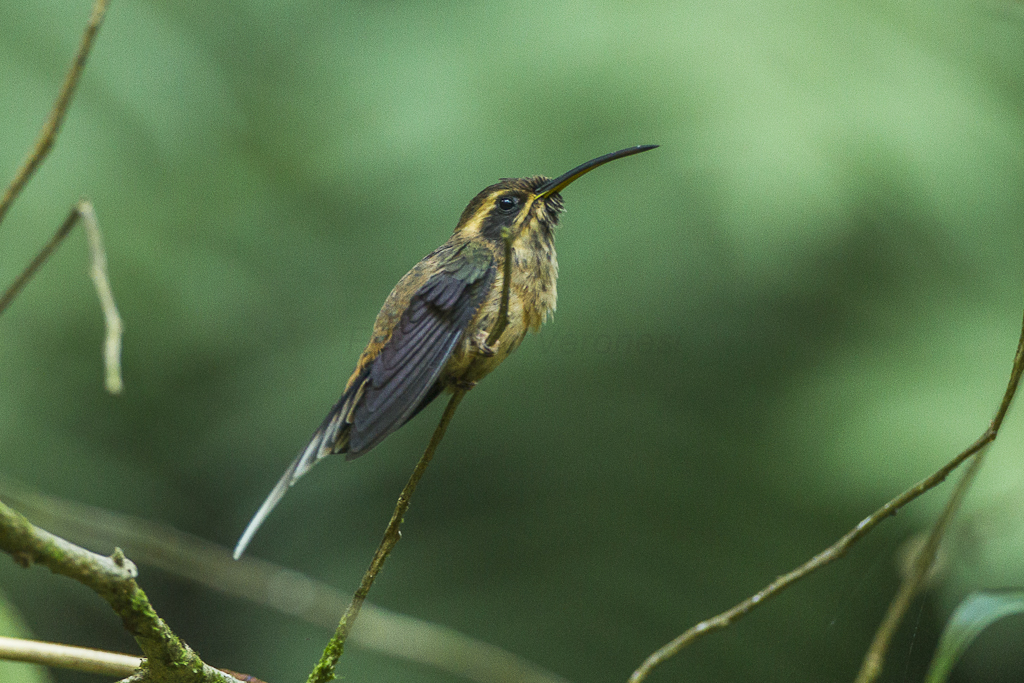
The breeding biology of the Long-billed Hermit has evolved distinct characteristics that accommodate its nocturnal lifestyle. Mating typically occurs during the transitional twilight periods of dawn and dusk, when light conditions allow for more effective visual assessment of potential partners while still maintaining the species’ nocturnal activity pattern. Females construct delicate cup-shaped nests attached to the undersides of broad leaves, often selecting locations near their regular feeding routes to minimize travel during the incubation period. Unlike many bird species where males contribute to nest-building or chick-rearing, female Long-billed Hermits assume sole responsibility for raising offspring, incubating two pea-sized eggs for approximately 16-18 days. The young develop remarkably quickly, fledging at about three weeks of age, though they continue to receive supplemental feeding from the mother for an additional two to three weeks while developing the sophisticated flight skills necessary for nocturnal foraging.
Ecological Importance as Pollinators
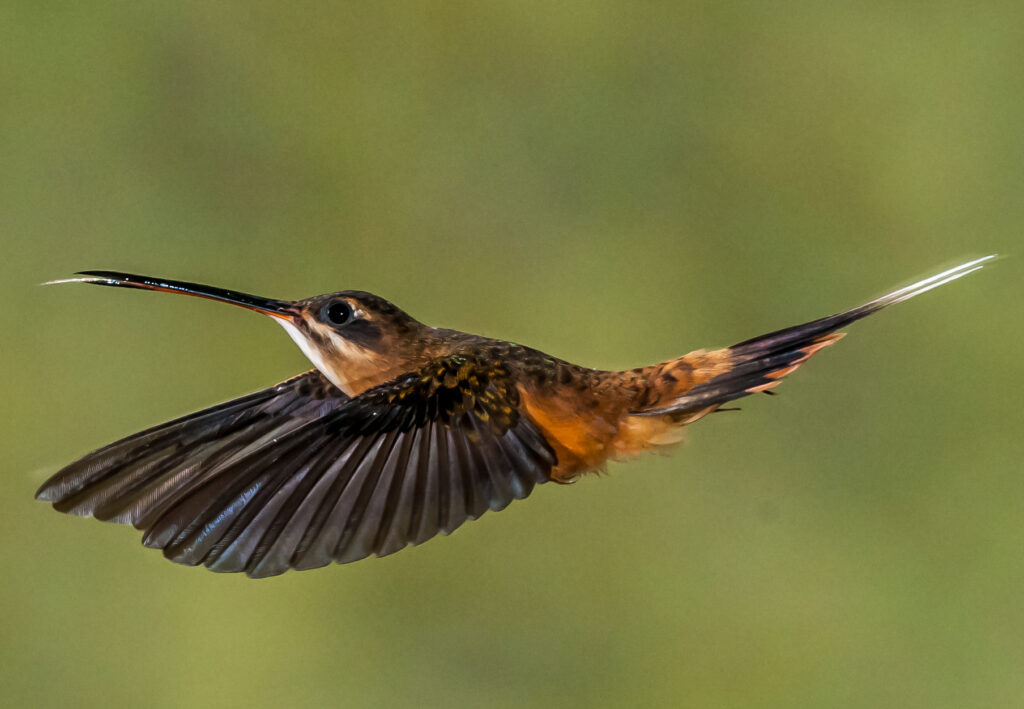
The Long-billed Hermit fulfills a critical ecological role as one of the few pollinators capable of servicing night-blooming plant species in tropical forest ecosystems. Many of these plants have evolved flowers specifically adapted to hummingbird pollination, characterized by tubular shapes that match the bird’s specialized bill and producing high-energy nectar rewards that sustain the hummingbird’s intensive metabolic demands. Botanical studies have identified over 40 plant species that depend primarily or exclusively on the Long-billed Hermit for successful reproduction. This pollination relationship has significant cascading effects throughout the ecosystem, as many of these plants produce fruits that serve as food sources for numerous other animal species. Conservation biologists consider the Long-billed Hermit a “keystone species” in tropical forest communities, where its absence would trigger a sequence of ecological disruptions affecting multiple trophic levels.
Predators and Defense Mechanisms
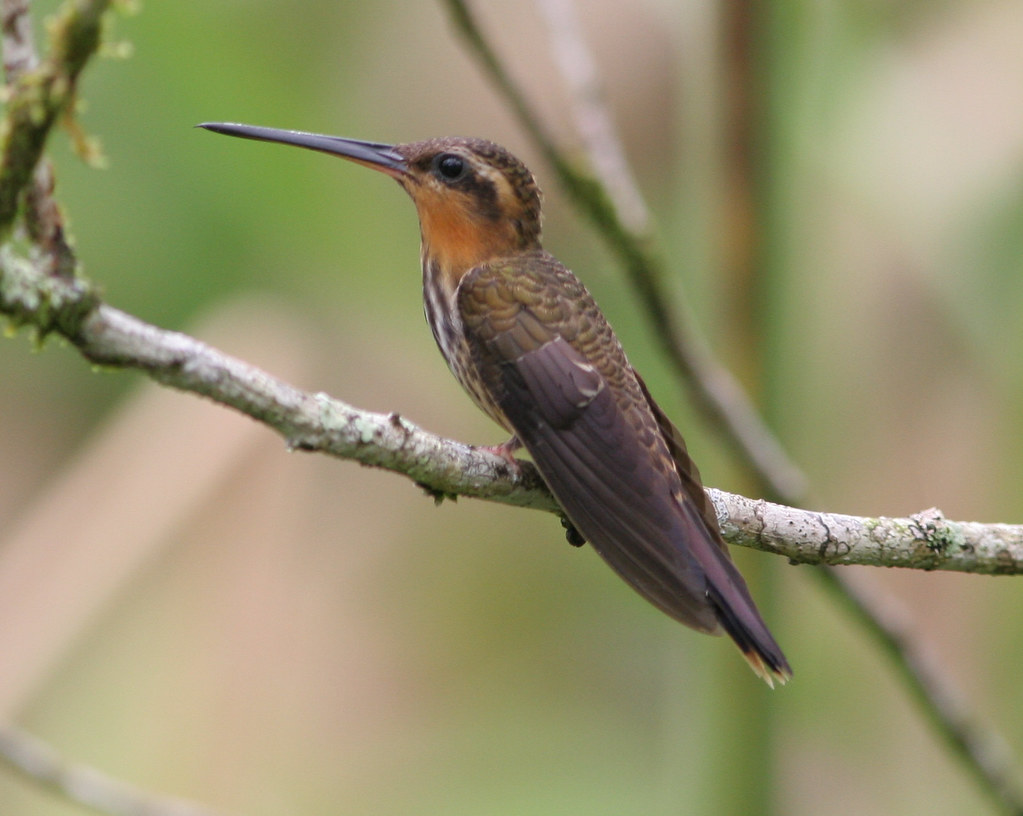
The nocturnal lifestyle of the Long-billed Hermit provides some natural protection from visual hunters, but these hummingbirds still face considerable predation pressure from specialized nighttime hunters. Owls represent their primary avian predators, while arboreal snakes, particularly certain species of lance-headed vipers, have evolved hunting strategies specifically targeting roosting hummingbirds. The Hermit’s primary defense lies in selecting highly concealed roosting sites, typically choosing locations amid dense epiphytic growth or beneath overhanging vegetation that protects above. When threatened, these hummingbirds can enter a state of torpor, dramatically reducing their metabolic rate and body temperature to conserve energy while remaining motionless and inconspicuous. Additionally, they possess remarkable spatial memory and maintain multiple alternative roosting locations, rarely using the same site on consecutive days, which helps minimize predator detection patterns.
Research Challenges and Scientific Discoveries
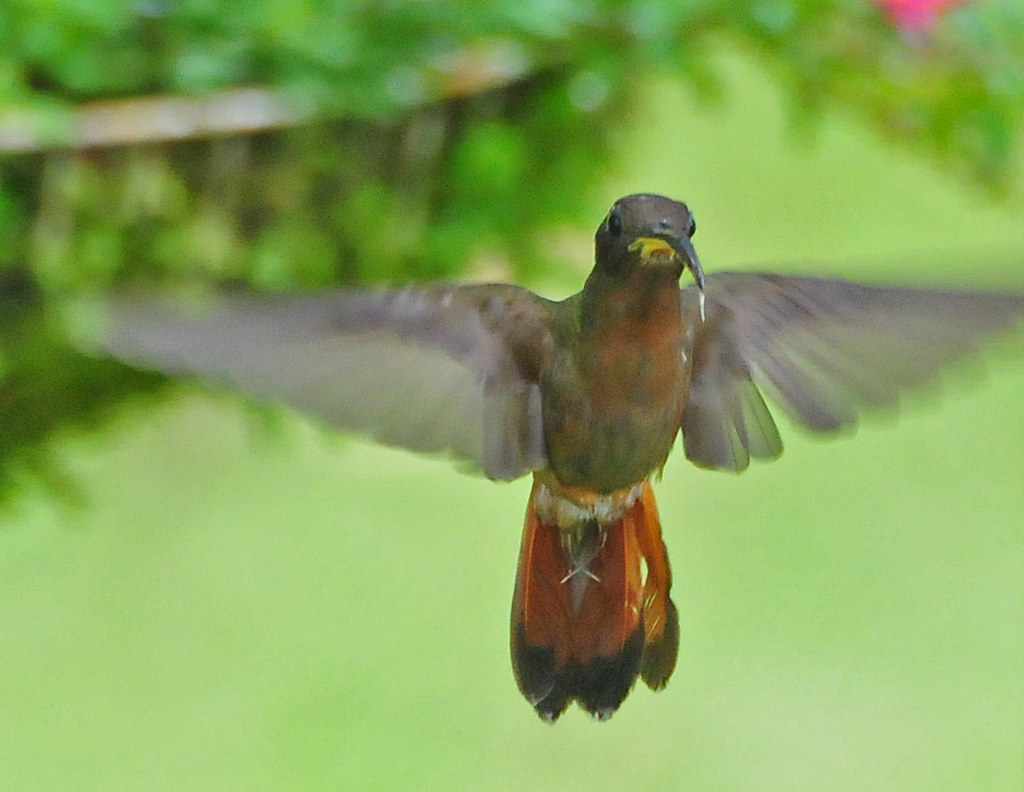
Studying the Long-billed Hermit presents unique challenges for ornithologists due to both its nocturnal habits and the dense forest habitats it occupies. Traditional bird observation methods must be significantly modified, with researchers utilizing specialized low-light video equipment, infrared imaging technology, and miniaturized radio transmitters weighing less than 0.3 grams to track individual birds without impeding their flight. Recent research has yielded several groundbreaking discoveries, including the identification of specialized receptors in the bird’s retina that maximize light sensitivity while sacrificing color discrimination during nighttime foraging. Genetic studies have revealed that the species likely diverged from diurnal ancestors approximately 5 million years ago, coinciding with a period of rapid diversification in night-blooming plant species throughout Central America. Perhaps most surprisingly, neurological research has documented that these hummingbirds possess the largest hippocampus-to-brain ratio of any bird studied to date, supporting the exceptional spatial memory capacity required for nocturnal navigation.
Conservation Status and Threats
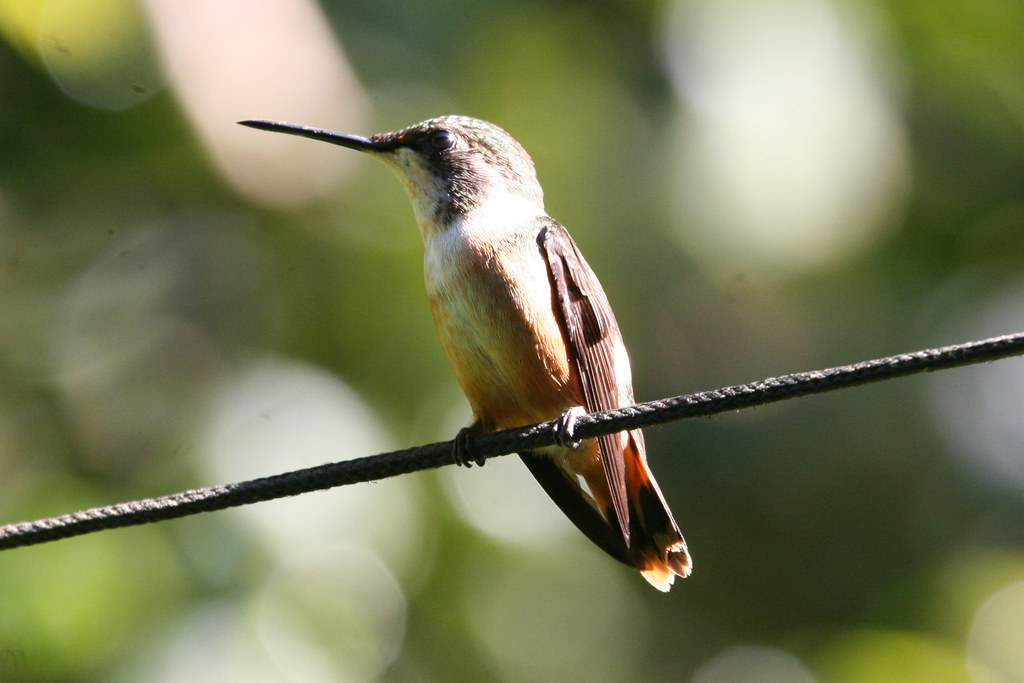
The Long-billed Hermit currently maintains a conservation status of “Least Concern” according to the International Union for Conservation of Nature (IUCN), but this classification masks significant regional population declines and growing threats to its specialized habitat. Deforestation throughout Central America has accelerated dramatically in recent decades, with some regions losing more than 60% of their original forest cover since 1980. Climate change poses an additional threat, as it disrupts the precise timing of flower blooming cycles that the hummingbird depends upon for sustenance. Invasive plant species are increasingly outcompeting the native flora that co-evolved with these birds, while expanding agricultural zones bring increased pesticide use that decimates insect populations that supplement the hummingbird’s diet. Conservation efforts have focused on establishing protected corridors connecting remaining forest fragments, alongside initiatives to restore native understory vegetation in degraded areas.
Cultural Significance and Indigenous Knowledge
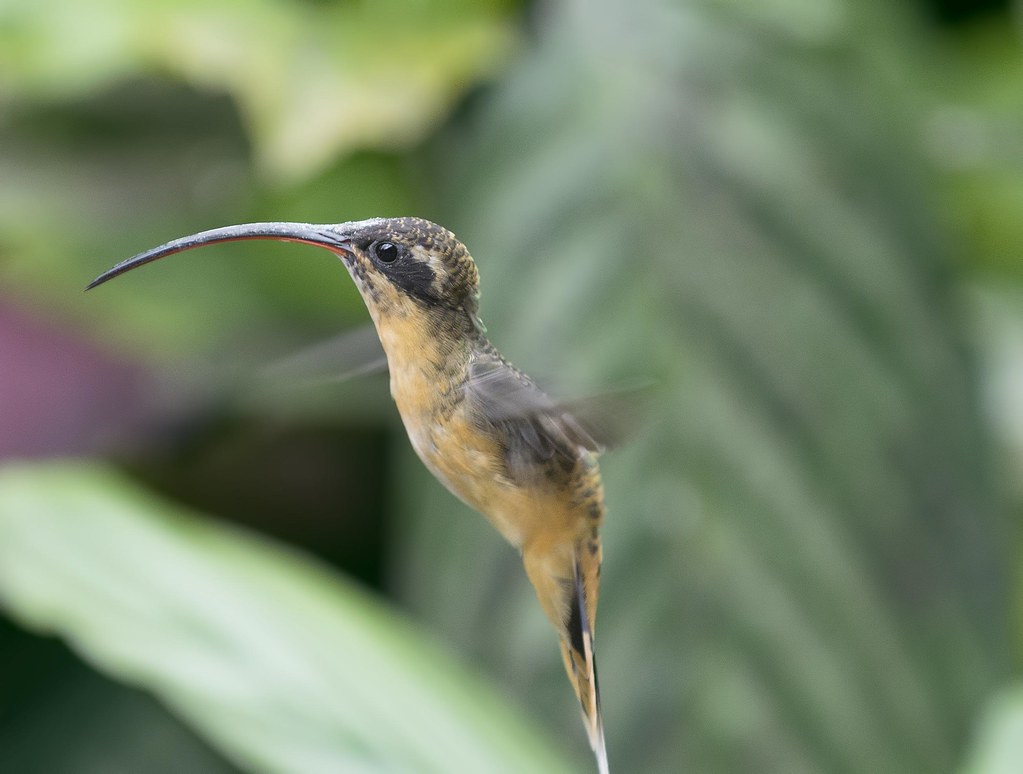
Indigenous communities throughout the Long-billed Hermit’s range have incorporated this unusual hummingbird into their cultural traditions and ecological knowledge systems for centuries. Many Central American indigenous groups, particularly among Maya-descended communities, associate the bird with spiritual connections between daytime and nighttime worlds, considering it a messenger capable of traversing these realms. Traditional ecological knowledge documented by ethnobiologists includes a sophisticated understanding of the birds’ feeding patterns, with several indigenous communities maintaining prohibitions against disturbing specific night-blooming plants recognized as critical food sources. Linguistic analysis reveals that in at least six different indigenous languages, the local name for this hummingbird translates approximately to “night spirit” or “dream visitor,” reflecting its mysterious nocturnal presence. These cultural connections have been leveraged by contemporary conservation programs that engage indigenous communities as partners in habitat protection efforts, incorporating traditional knowledge into scientific monitoring protocols.
Conclusion

In conclusion, the Long-billed Hermit stands as a testament to the remarkable adaptability of life and the specialized niches that can emerge through evolutionary processes. As the world’s only truly nocturnal hummingbird, it represents a fascinating example of how species can defy family characteristics to exploit untapped ecological opportunities. Its specialized relationship with night-blooming plants highlights the intricate interdependencies that sustain tropical forest ecosystems. While facing mounting conservation challenges, this extraordinary bird continues to captivate scientists and nature enthusiasts alike, hovering at the edge of day and night as a living embodiment of nature’s endless capacity for specialization and adaptation. By understanding and protecting this unique species, we gain not only scientific knowledge but also preserve a truly exceptional evolutionary marvel for future generations.
